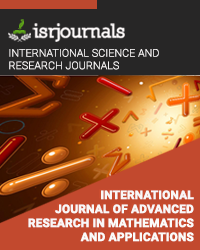fuzzy queueing model using dsw algorithm
R. Srinivasan,
Published in International Journal of Advanced Research in Mathematics and Applications
ISSN: 2350-028X Impact Factor:1.2 Volume:1 Issue:1 Year: 08 January,2014 Pages:57-62

Abstract
This paper proposes a procedure to construct the membership functions of the performance measures in queueing systems where the interarrival time and service time are Fuzzy numbers. We propose a Fuzzy nature in FM/FM/1 queueing system with finite capacity and calling population are infinite. Approximate method of extension namely DSW(Dong, Shah & Wong) algorithm is used to define membership functions of the performance measures for the Queueing model FM/FM/1 in which the arrival rate and service rate are Fuzzy numbers. DSW algorithm is based on the α – cut representation of fuzzy sets in a standard interval analysis. The discussion of this paper is confined to systems with the Fuzzy variables. Numerical example shows the efficiency of the algorithm.
Kewords
Queueing theory, α - cut, Membership function, DSW algorithm
Reference
[1] Buckely.J.J, (1990) “Elementary queueing theory based on possibility theory”, Fuzz and Systems 37, 43 – 52. [2] Chen.S.P, (2005) “Parametric nonlinear programming approach to fuzzy queues with b service”, European Journal Of Operational Research 163, 434 – 444. [3] Chen. S.P, (2006) “A mathematics programming approach to the machine interference problem with fuzzy parameters”, Applied Mathematics and Computation 174, 374 – 3 [4] Gross, D. and Haris, C.M. 1985. Fundamentals of Queuing Theory, Wiley, New York Kanufmann, A. (1975), Introduction to the Theory of Fuzzy Subsets, Vol. I, Academic Press New York. [5] Li.R.J and Lee.E.S(1989) “Analysis of fuzzy queues”, Computers and Mathematics with Applications 17 (7), 1143 – 1147. [6] Negi. D.S. and Lee. E.S. (1992), Analysis and Simulation of Fuzzy Queue, Fuzzy sets a Systems 46: 321 – 330. [7] Timothy Rose(2005), Fuzzy Logic and its applications to engineering, Wiley Eastern Publishers. Yovgav, R.R. (1986), A Characterization of the Extension Principle, Fuzzy Sets and Systems 18: 71 – 78.

